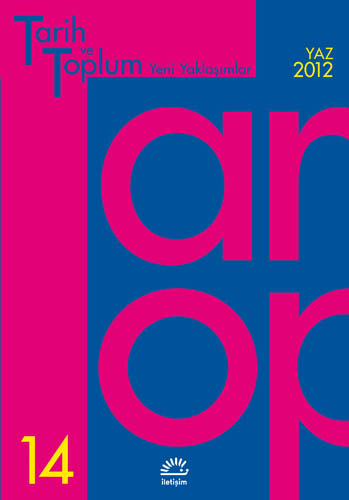Ottoman Urban Fires, 1914-18
ZELİHA ETÖZ - TAYLAN ESİN
This paper aims to present and interpret the data on the great fires that devastated the Ottoman cities during World War I. Those fires were neither the outcome of armed struggles, nor were they assumed to be natural disasters: As archive documents have revealed and circulating rumors have implied, they were by-products of a complex process, determined by the political economy of war, deportations and settlements. Except Istanbul, Fatih, the headquarters of the anti-CUP political circles, all fires affected mainly the Christian quarters in Ottoman cities, or towns whose majority was Christian. Pre-deportation fires, synchronized with war seizures and conscriptions, served to deteriorate the economic situation of the Christian communities. Post-deportation fires could exceptionally be the reaction of the local inhabitants, who tried to prevent the settlement of war refugees to abandoned houses. In general, however, it may be assumed that, as a response to the latest situation at the theaters of war, the CUP rule took counter-measures against Christian minorities, among which there were definitely deportations, facilitated or followed by fires. Post-deportation fires were, in other cases, used to justify and expedite the internationally-opposed deportations and to liquidate the abandoned property.
Keywords: Fire, war, deportation, abandoned property, Christian minority.
* * *
Reserve OffIcers: An Analysis of a Compulsory
Why did the reserve officers of Ottoman army
organize in the days of Armistice?
SIRRI EMRAH ÜÇER
At early days of the period following the Armistice of Mudros, the reserve officers of Ottoman army passionately desired to return to civilian life. These young men, who were kept away from their school, work, family and hometown during the long years of war, came up with some demands to pave their way to adjust to peace. One of the media they benefit to make their demands visible was reader’s columns of newspapers. Ati, a newspaper in İstanbul, is the primary source that should be analyzed with its column named “Gençliğin Atisi” (future of youth) which is exclusive to reserve officers. Readers’ letters are analyzed to understand which “discursive strategies” they employ to legitimize their demands in the opinion of “the reading public”, how the government reacted, in short, reasons of reserve officers in coming together around mutual-aid associations. Another purpose is to examine the possibility to make use of reader’s columns as sources of social historiography on İstanbul in the Armistice Period.
Keywords: Armistice Period, Media of Armistice Period, reserve officers, ihtiyat zabitan, social history, discursive strategy, reading public.

